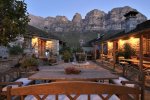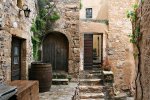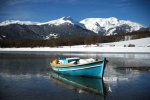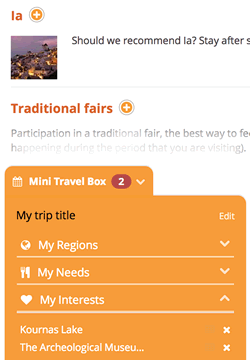How must these palaces have looked in their prime, that even now their ruins cause admiration? Could the arcades at the Kastelli of Messaria perhaps be the mythical Labyrinth in which the Minotaur lived? Did the Kourites really dance the Pyrrichios at Ideon Andron in order to hide the cries of the newborn Zeus? These are few of the questions that might come to mind when exploring the prefecture of Heraklion. The prefecture of Heraklion is located in the middle of the island, bordering on the north with the Aegean and on the south with the Libyan Sea. Mount Ida (also known as Psiloritis) towers in the center of the prefecture overlooking both seas.
During his excavations, the British archaeologist Sir Arthur Evans unearthed the ruins of a civilization which, the evidence suggests, was the greatest of its era. He named it Minoan. Its peak is placed around 2.000 BC, when the magnificent palaces of Crete were built, the most important of which being the palace at Knossos, the administrative, economic and cultural center of the Minoan civilization. Second in importance but no less well known is the palace at Phaistos. According to one school of thought, the Minoan civilization received a devastating blow from the catastrophic eruption of the volcano of Thira (modern-day Santorini), leading to its eventual decline. In 69 BC, after many years of struggle, the Romans conquered the island. The Romans built the city of Gortyna as their capital, which at its peak reached 300,000 inhabitants. In the 9th century, Arab Saracens landed on the island. Their leader burned his ships, forcing his soldiers to fight for the conquest of the land ‘flowing with milk and honey.’ They conquered the island and build their capital city near to where the city of Heraklion is located today. They built up walls and moats. The town was called Chandakas (from ‘chandaki’, the Greek word for a ditch), or as the Venetians named it, Candia. In 961 AD the Emperor Nikiforos Fokas recaptured the island, which remained under the administration of the Byzantine Empire until 1212 AD, at which time it came under the control of the Venetians. In these troubled years, the Cretans fought against the Venetians, but when the island was later attacked by the Ottomans, the Venetians and Cretans fought side by side during the siege of Candia. The city eventually fell in 1669, after 23 years of siege, into Turkish hands. The revolution of 1821 found the Cretans again fighting for their freedom, and in the year 1898 the independent Cretan State was established. During the early 20th century, Christian Greek and Muslim Turkish communities existed side-by-side until 1923, when in the exchange of populations the Turks left the island. Last stop on the troubled history of Crete is the German occupation, which cast dark clouds on the island from May 1941 until 1944.
Since the time of its liberation, many Germans and visitors from all over the world have visited the island to learn about its history, admire the monuments, enjoy its wildlife, beautiful beaches, fertile valleys, and delicious local delicacies.
The prefecture of Heraklion, dotted throughout with countless small villages that still manage to keep their traditions; magical archaeological sites, various beaches, and rugged countryside, welcomes visitors throughout the year. Especially during the summer months, small and large villages and the city of Heraklion itself organize a series of events designed to preserve the folk heritage and traditional music of Crete.
The northern part of the district is more developed, dominated by resorts, while the less-accessible south presents a different picture, maintaining a more natural beauty; its rugged mountains blend harmoniously with the blue waters, making it ideal for those who love to travel, explore and discover.
Use the map or the alphabet below to find your favorite destination!
Achaea Prefecture
Aegina
Aetoloakarnania Prefecture
Agathonisi
Agistri
Alonissos
Amorgos
Anafi
Andros
Antiparos
Arcadia Prefecture
Argolida Prefecture
Arta Prefecture
Astypalea
Attiki Prefecture
Kalymnos
Karditsa Prefecture
Karpathos
Kasos
Kastelorizo
Kastoria Prefecture
Kavala Prefecture
Kea (Tzia)
Kefalonia
Kerkyra (Corfu)
Kilkis Prefecture
Kimolos
Korinthia Prefecture
Kos
Koufonisi (Ano & Kato)
Kozani Prefecture
Kythira - Antikythira
Kythnos
Samos
Samothrace
Santorini
Schinoussa
Serifos
Serres Prefecture
Sifnos
Sikinos
Skiathos
Skopelos
Skyros
Spetses
Symi
Syros
Would you like to combine skiing in the morning and then go swimming in the afternoon, all in one region? Click to choose your interests and see in which part of Greece you enjoy them. Combinations are endless!










